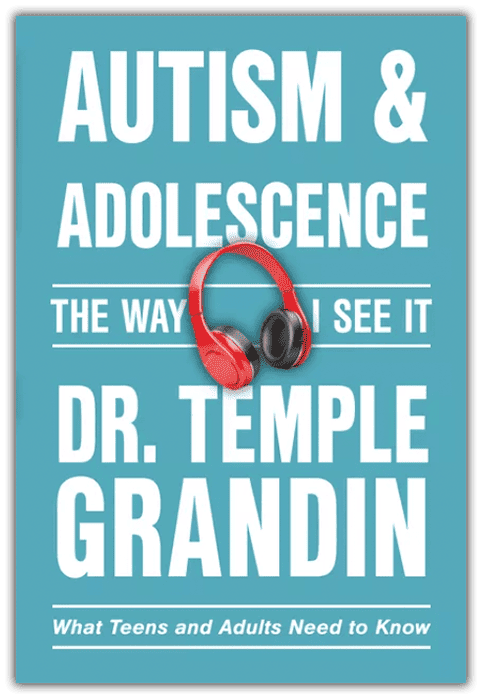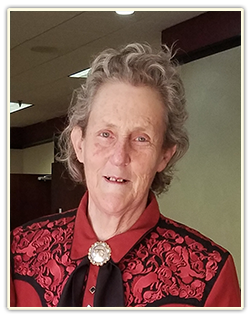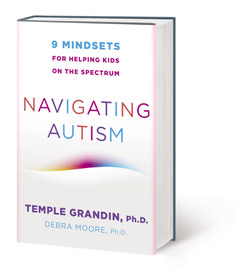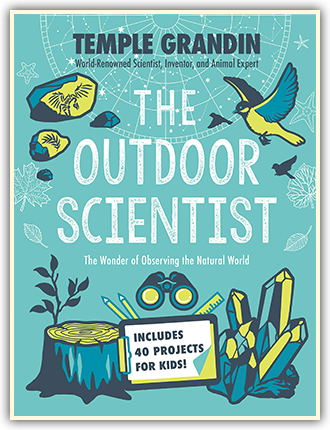
Webinars & Conferences
Upcoming Conferences
April 11 - Madison, WI
April 22 - Randolph, MA
April 24 - Oklahoma City, OK
April 29 - Springfield, MO
May 21 - Omaha, NE
May 30 - Nashville, TN
A MUST LISTEN!!
Temple's Latest Books!
Temple Grandin earns Dole Leadership Prize!
NAVIGATING AUTISM
"The Outdoor Scientist"
Easing the Transition to High School
Surprises cause fright. The best way to ease the transition to high school is to have the child visit the school before he or she enters in the fall. The best scenario would be meeting the new teachers and visiting a class in the spring, before he/she enrolls in the fall. If visiting the school is not going to be possible, then visiting the school’s webpage will help make it more familiar. You could also look up news articles and other publications about activities in the new school.
One of the biggest changes is that the child will have many different teachers instead of a single one for all of the subjects. This should be explained to the child.
I was one of the students who had a terrible time being bullied in high school. The only places where I had friends and was not being bullied were at specialized activities such as horseback riding, model rockets, and electronics. Children on the spectrum should be encouraged to engage in specialized activities such as Future Farmers of America (FFA), band, woodworking, art, theater, welding, or robotics club. It is a shame that some schools have removed many of these activities. Fortunately, some schools are putting some of these specialized activities back in. Another reason why these classes are important is that they introduce students to different career options. Some students have no idea what they want to do when they grow up.
For individuals with severe sensory problems, some additional steps may be needed to ease the transition. How noisy will the cafeteria be? Is the school bell really loud and scary? Will the new school allow some sensory breaks if the child needs to calm down? For these children, scheduling a time to visit the school when it is in session may be even more important.
Another potential issue is the school bus. Will the child be going on a school bus for the first time? If this is the case, a few practice rides in the spring may be advisable. The principle goal is to reduce sudden surprises.
About Temple Grandin
Dr. Grandin did not talk until she was three and a half years old. She was fortunate to get early speech therapy. Her teachers also taught her how to wait and take turns when playing board games. She was mainstreamed into a normal kindergarten at age five. Oliver Sacks wrote in the forward of Thinking in Pictures that her first book Emergence: Labeled Autistic was “unprecedented because there had never before been an inside narrative of autism.” Dr. Sacks profiled Dr. Grandin in his best selling book Anthropologist on Mars.
Dr. Grandin became a prominent author and speaker on both autism and animal behavior. Today she is a professor of Animal Science at Colorado State University. She also has a successful career consulting on both livestock handling equipment design and animal welfare. She has been featured on NPR (National Public Radio) and a BBC Special – "The Woman Who Thinks Like a Cow". She has also appeared on National TV shows such as Larry King Live, 20/20, Sixty Minutes, Fox and Friends, and she has a 2010 TED talk. Articles about Dr. Grandin have appeared in Time Magazine, New York Times, Discover Magazine, Forbes and USA Today. HBO made an Emmy Award winning movie about her life and she was inducted into the American Academy of Arts and Sciences in 2016.
When she was young, she was considered weird and teased and bullied in high school. The only place she had friends was activities where there was a shared interest such as horses, electronics, or model rockets. Mr. Carlock, her science teacher, was an important mentor who encouraged her interest in science. When she had a new goal of becoming a scientist, she had a reason for studying. Today half the cattle in the United States are handled in facilities she has designed.





